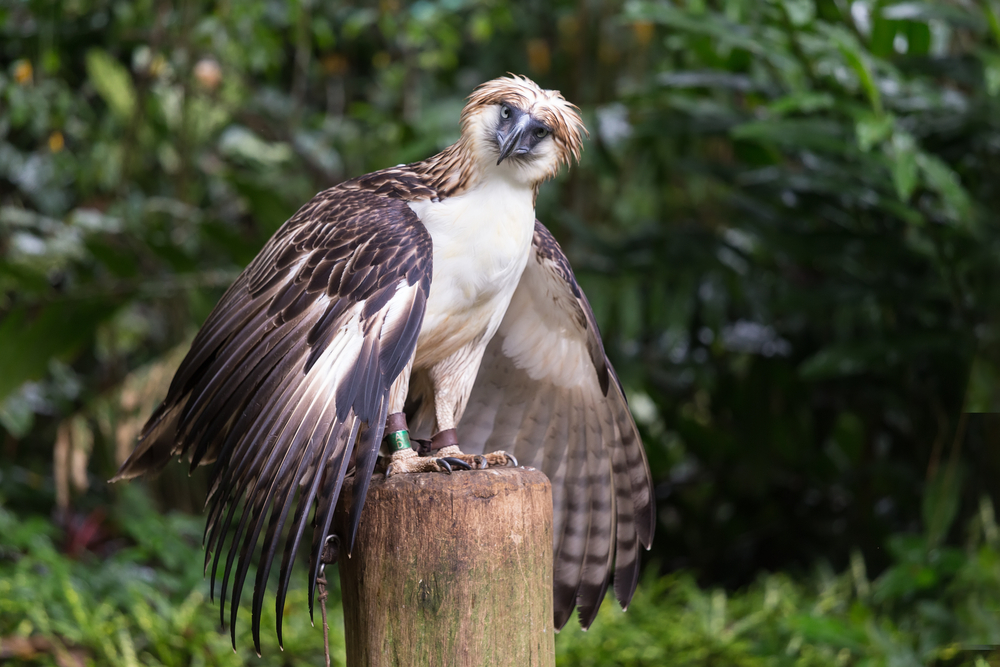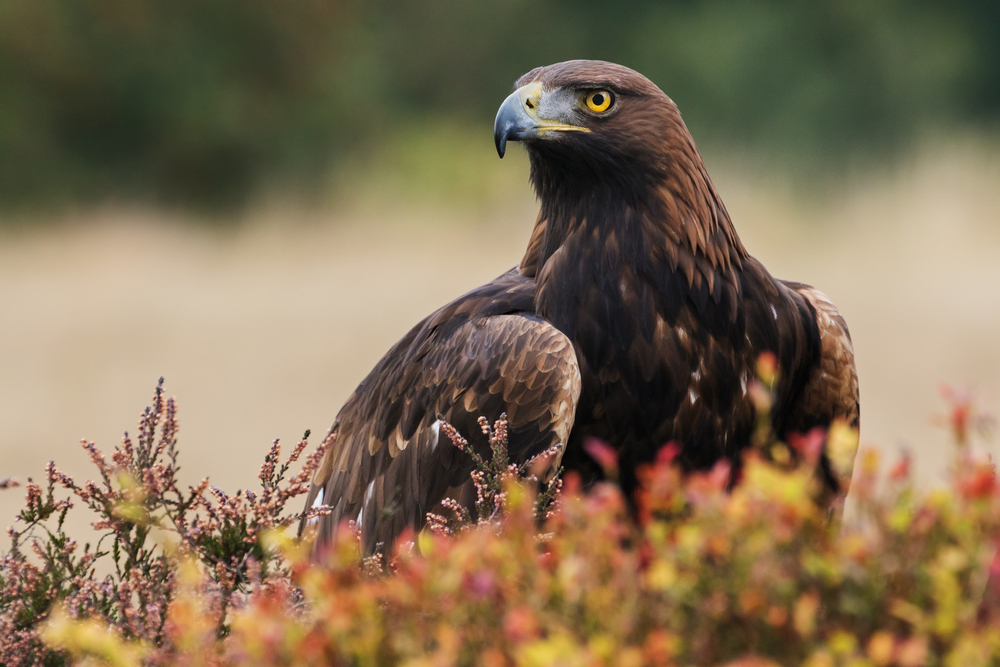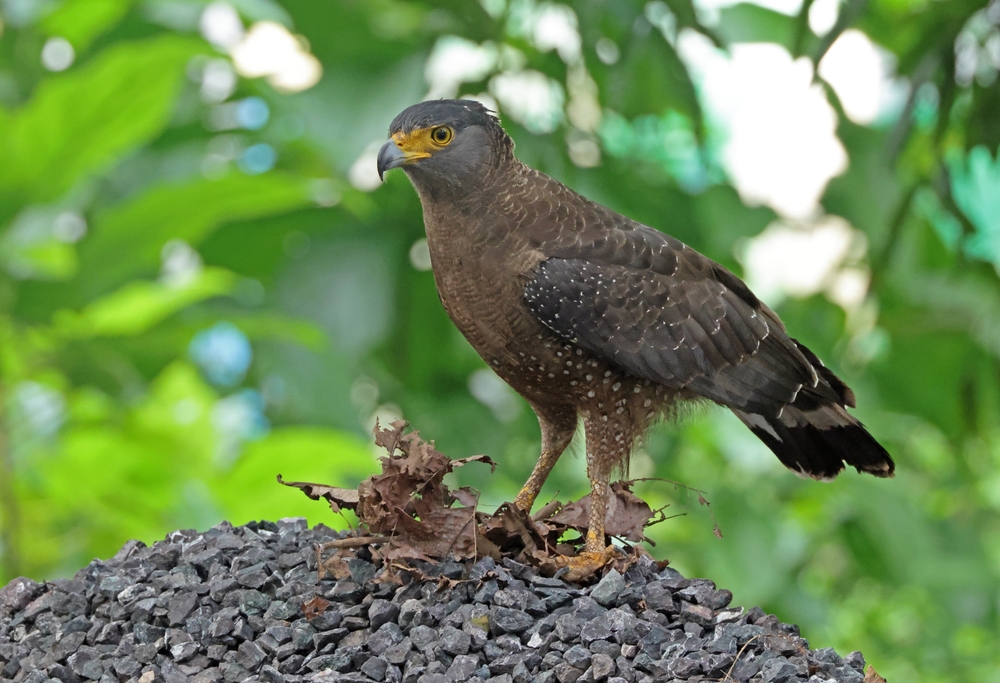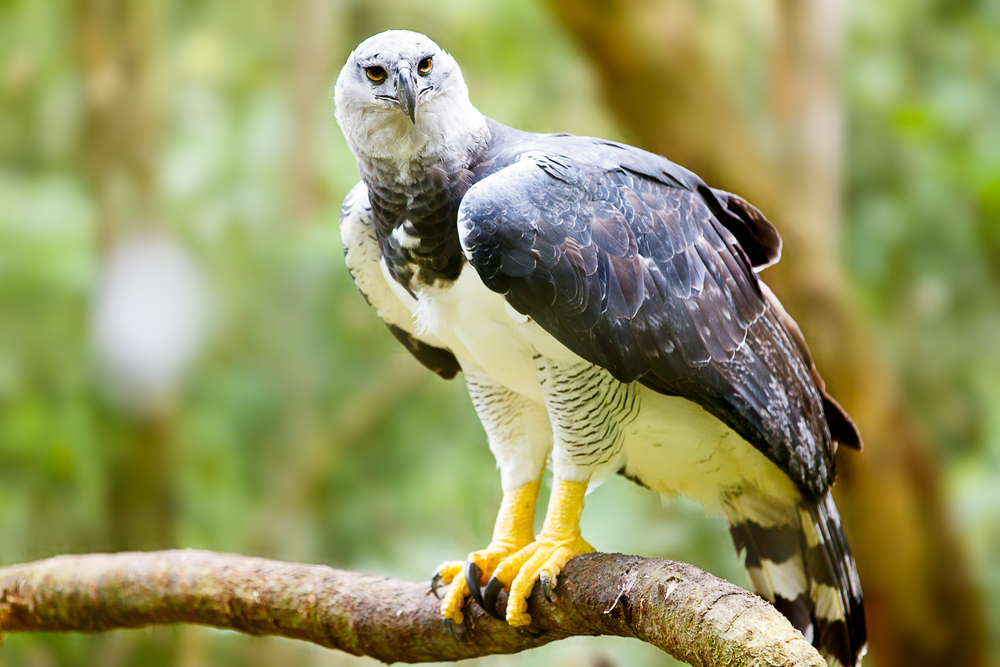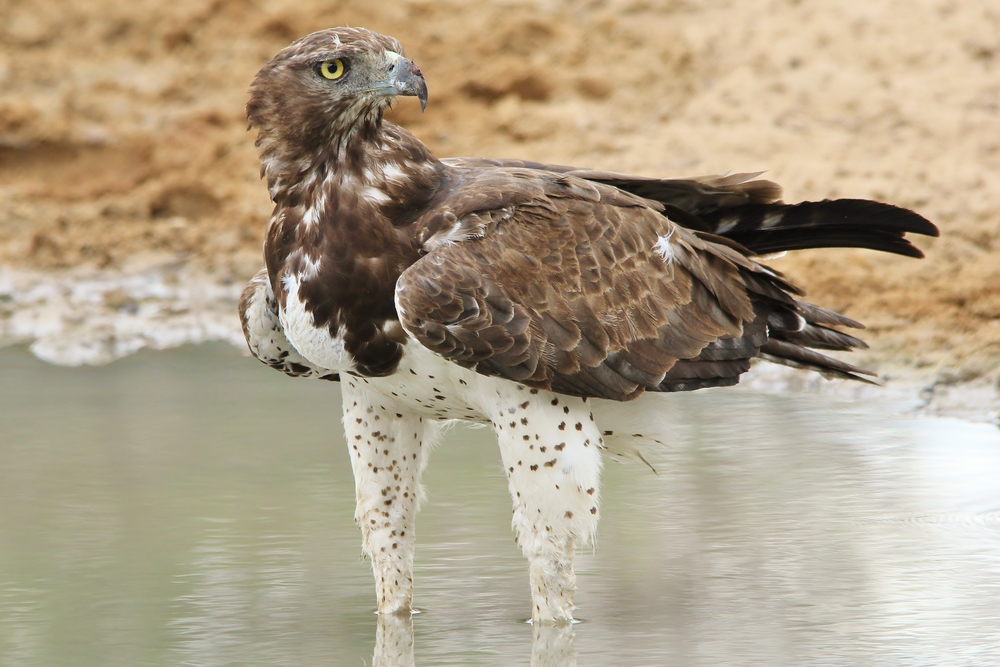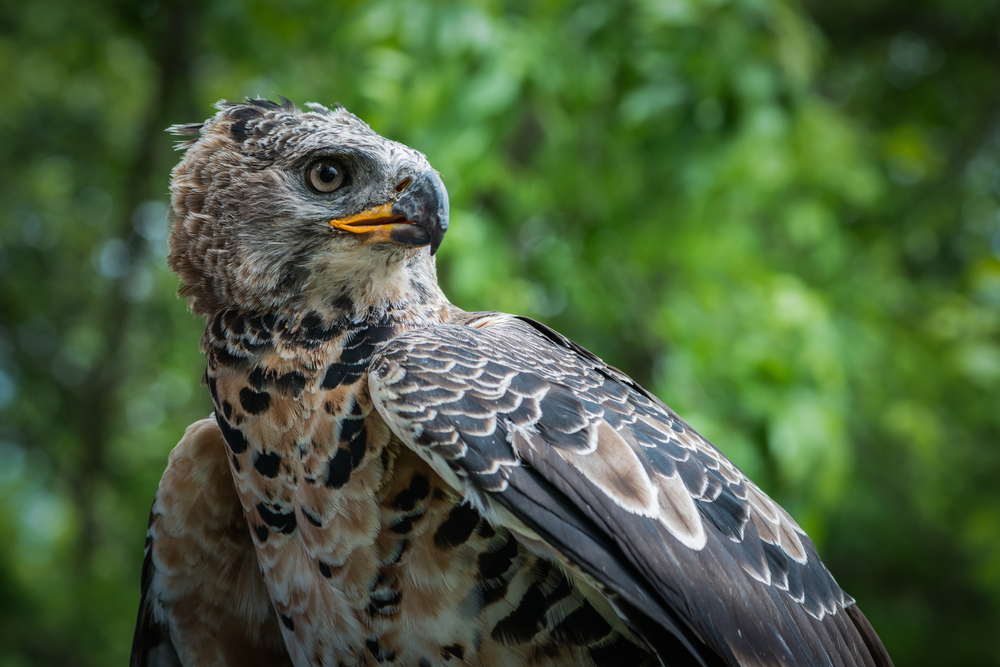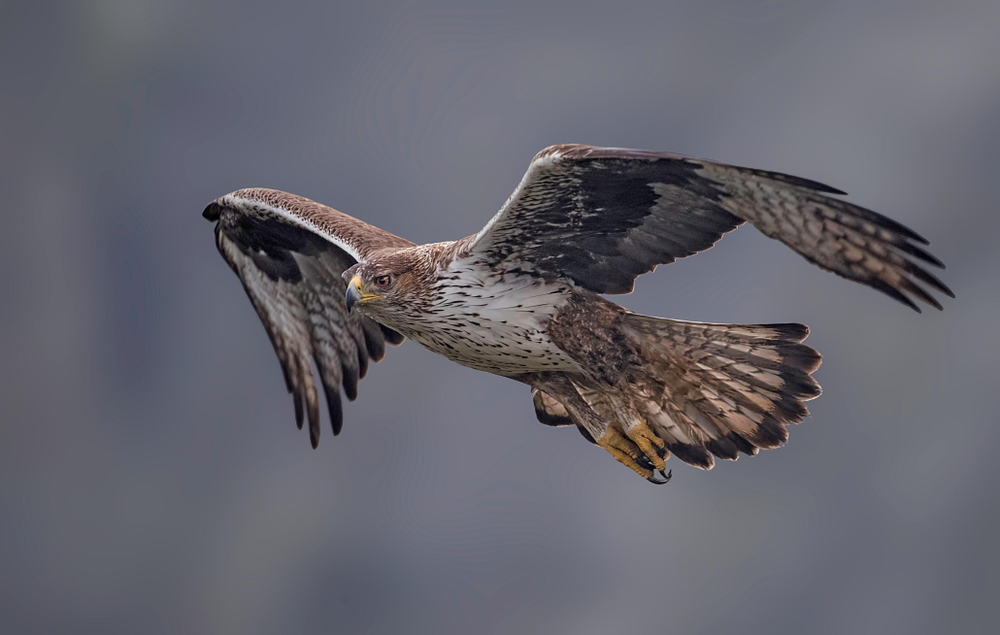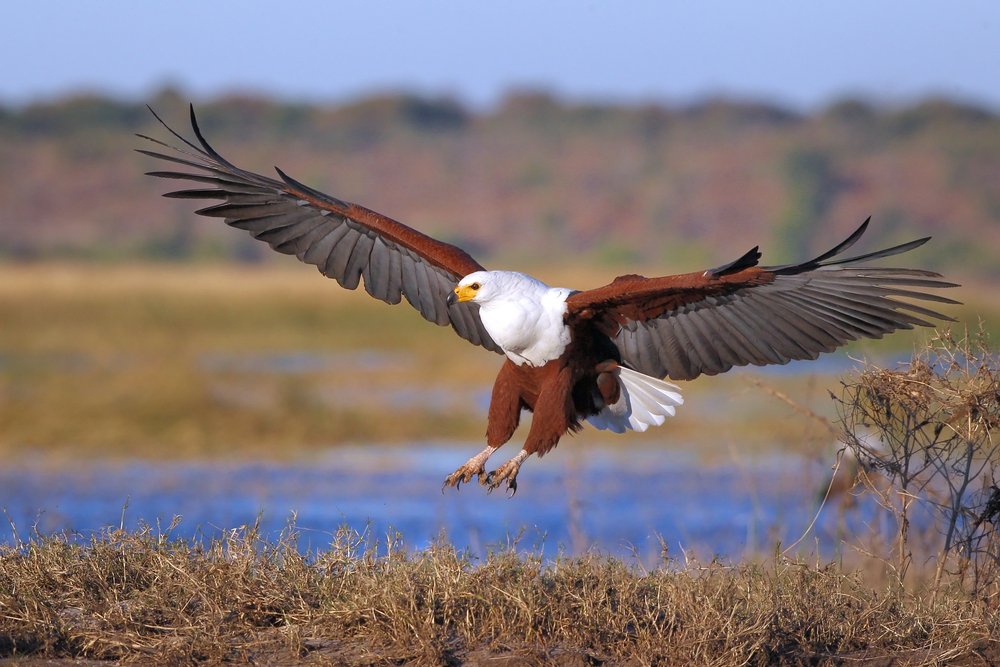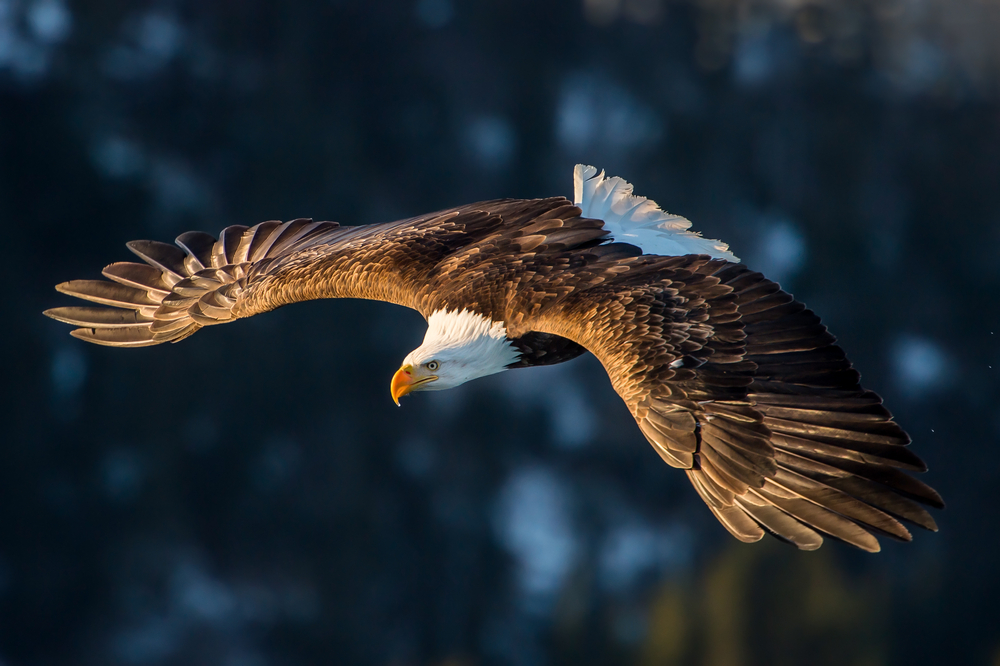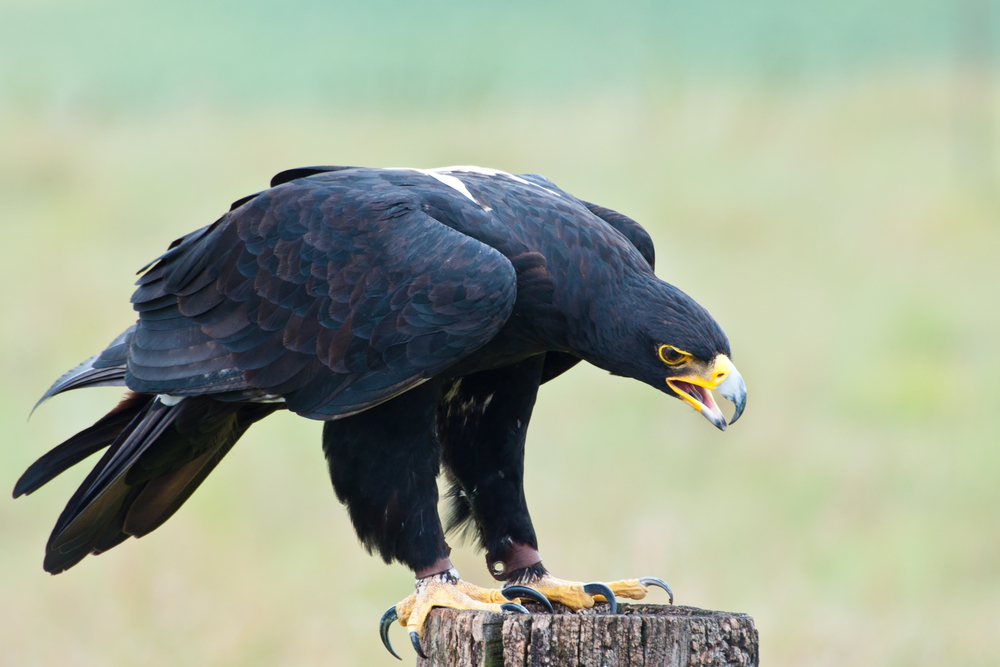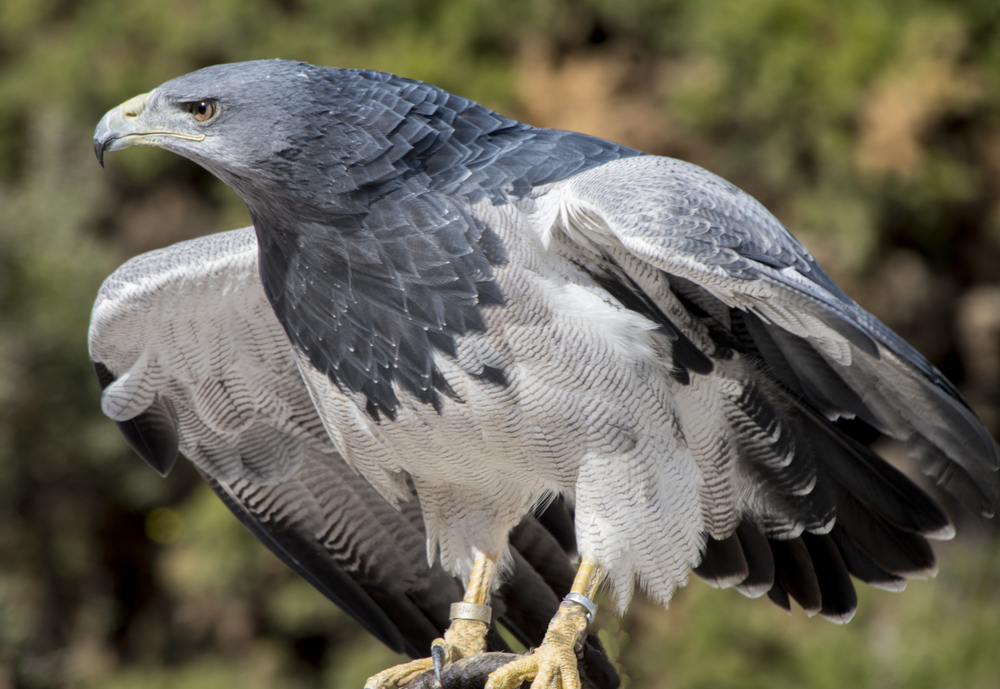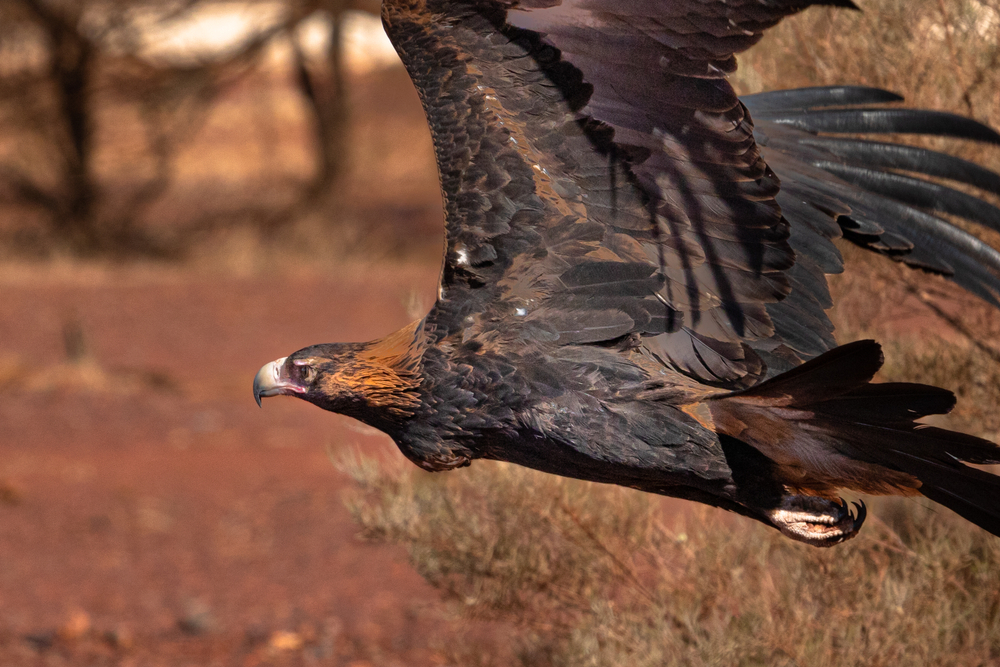The Philippine Eagle is unique within its own genus (Pithecophaga), but its closest relatives are other large tropical forest raptors such as the Harpy Eagle (Harpia harpyja) of South America and the Crowned Eagle (Stephanoaetus coronatus) of Africa. All three share adaptations for hunting large mammals in dense forests.
About
The Philippine Eagle is one of the rarest and most endangered raptors in the world, and the national bird of the Philippines. Endemic to the country’s forests on Luzon, Mindanao, Samar, and Leyte, this eagle is a striking symbol of strength and resilience. It is distinguished by its tall crest of shaggy feathers, piercing blue-gray eyes, and massive size—earning it the title of the world’s largest eagle by length. Known locally as the Haribon or “Bird of Prey,” the Philippine Eagle is revered as a cultural icon as well as a keystone predator.
This eagle measures 86–102 cm (34–40 in) in length, with a wingspan of 184–220 cm (6–7.2 ft). Females, the larger sex, may weigh up to 8 kg (18 lbs). Despite its huge wingspan, the Philippine Eagle has relatively short, broad wings and a long tail, adaptations that allow it to weave through dense rainforest canopies in pursuit of prey. It feeds primarily on flying lemurs, monkeys, snakes, and large birds, placing it at the very top of its food chain.
Breeding pairs construct enormous stick nests high in emergent forest trees, often returning to the same nest year after year. The female typically lays a single egg, and because the young require more than a year of care before independence, pairs only breed once every two years. This slow reproductive rate, combined with deforestation and hunting, has led to severe population declines. In the wild, Philippine Eagles can live up to 30–40 years.
The scientific name of the Philippine Eagle is Pithecophaga jefferyi, and it belongs to the family Accipitridae, which includes eagles, hawks, and kites. With fewer than 1,000 mature individuals remaining, it is classified as Critically Endangered on the IUCN Red List. Conservation efforts, including habitat protection and breeding programs, are vital to its survival. Majestic and powerful, the Philippine Eagle embodies the rich biodiversity of the archipelago and the urgent need for conservation.
Physical Characteristics
The Philippine Eagle (Pithecophaga jefferyi), also known as the Monkey-eating Eagle, is one of the world’s largest and rarest birds of prey, and the national bird of the Philippines.
Plumage:
Adults have a striking appearance with a dark brown upper body contrasting with a white underside and legs. The wings are broad and rounded, with dark feathering above and lighter below. Their most iconic feature is the long, shaggy crest of brown feathers streaked with cream, giving them a regal, lion-like mane.
Head and Face:
The head is large, crowned with the distinctive crest. The beak is massive, bluish-gray, and strongly hooked, perfectly adapted for tearing through thick hides. Their eyes are pale blue-gray, set deep within the facial disk, giving them a fierce, penetrating look.
Body and Wings:
They have a powerful, muscular body with long wings built for short bursts of strength rather than long-distance soaring. Their broad wings and long tail help them maneuver within dense forest canopies.
Size:
-
Length (Body): 34 to 39 in (86 to 100 cm)
-
Wingspan: 72 to 86 in (184 to 220 cm)
-
Tail Length: 16 to 18 in (40 to 45 cm)
Weight:
-
Males: 10 to 14 lbs (4.5 to 6.5 kg)
-
Females: 15 to 18 lbs (7 to 8 kg), making them among the heaviest and longest eagles in the world.
The Philippine Eagle’s impressive crest, massive beak, and sheer size make it one of the most visually stunning and powerful raptors on Earth, perfectly adapted for life as a top predator in dense tropical forests.
Reproduction
The Philippine Eagle has one of the slowest reproductive rates of any raptor, a factor that makes it especially vulnerable to population decline.
1. Mating and Courtship:
Philippine Eagles are monogamous and believed to mate for life. Courtship includes dramatic aerial displays, mutual calling, and nest-building behavior. Established pairs defend large forest territories.
2. Nesting:
Nests are enormous structures, often 3 to 5 feet (1 to 1.5 m) across, built high in tall emergent trees such as dipterocarps. Nests are reused year after year, with fresh greenery added each breeding season.
3. Egg-Laying:
The female lays a single egg every 2 years. If the egg fails or the chick dies early, the pair may attempt another breeding cycle the following year.
4. Incubation:
Incubation lasts about 58 to 60 days, with the female performing most of the brooding while the male hunts and delivers food.
5. Raising Chicks:
The chick hatches covered in white down and is closely brooded for the first several weeks. Both parents provide food, primarily monkeys, flying lemurs, civets, and other arboreal mammals.
6. Fledging and Independence:
Young eagles fledge at around 4 to 5 months, but remain dependent on their parents for food and survival training for up to 18 months. This extended dependency means pairs breed only once every two years.
The Philippine Eagle’s reproductive cycle—single-egg clutches, long incubation, and extended parental care—ensures strong survival chances for each chick but greatly limits population growth.
Lifespan
The Philippine Eagle is a long-lived forest raptor, but its survival is threatened by habitat loss, hunting, and its slow reproductive cycle.
Lifespan in the Wild:
In their natural rainforest habitats, Philippine Eagles are estimated to live 30 to 40 years, though reliable data is scarce due to their rarity. Mortality is highest among juveniles during their first years of independence.
Lifespan in Captivity:
In managed care, such as conservation breeding programs, they may live 40 to 60 years, benefitting from steady food supplies, veterinary care, and protection from hunting and deforestation.
Threats to the Philippine Eagle:
-
Deforestation: Logging and agricultural expansion remove nesting and hunting grounds.
-
Hunting and Persecution: Despite legal protection, they are sometimes hunted for food or trophies.
-
Slow Reproduction: With only one chick every two years, populations cannot quickly recover from losses.
-
Prey Decline: Reductions in monkeys, flying lemurs, and other forest mammals threaten food availability.
-
Human Encroachment: Expanding rural development brings nest disturbance and increased conflict.
Care and Protection:
Conservation efforts led by the Philippine Eagle Foundation focus on habitat preservation, education, captive breeding, and nest monitoring. Protecting remaining forests is essential to their survival.
The Philippine Eagle’s long lifespan but extremely slow reproduction highlight why it is one of the world’s most endangered raptors, with fewer than 1,000 individuals remaining in the wild.
Eating Habits
The Philippine Eagle is a specialized forest predator, relying heavily on arboreal mammals and birds within the dense canopies of the Philippines’ tropical rainforests.
Diet:
Its diet consists primarily of monkeys (such as macaques), flying lemurs (colugos), and other medium-sized mammals like civets and squirrels. It also hunts large birds, snakes, and occasionally monitor lizards. This dependence on forest prey reflects its role as the apex predator of Philippine rainforests.
Hunting Strategy:
The Philippine Eagle is an ambush hunter, relying on stealth and sudden bursts of speed. It perches silently within the canopy, scanning for prey, then swoops with powerful wingbeats and seizes prey with its massive talons.
Killing Technique:
With one of the most powerful beaks among eagles and huge talons, it is capable of killing prey equal to its own weight. Prey is dispatched with a crushing grip and sharp beak strikes.
Feeding Behavior:
Large kills may be consumed over several days. During nesting, the male often delivers prey to the female, who then tears it into smaller portions for the chick.
Special Considerations:
-
Prey Specialization: Dependence on monkeys and flying lemurs makes it vulnerable to declines in forest mammal populations.
-
Energy Efficiency: Hunting fewer but larger prey reduces the need for frequent kills.
-
Ecosystem Role: As the apex predator of Philippine forests, it regulates populations of arboreal mammals and helps maintain ecological balance.
The Philippine Eagle’s dependence on canopy mammals, stealthy ambush tactics, and immense power make it one of the most specialized and formidable hunters in the world.
Uniqueness
The Philippine Eagle is one of the rarest and most distinctive birds of prey in the world, both biologically and culturally.
National Symbol:
It is the national bird of the Philippines and a symbol of strength, freedom, and biodiversity. Its protection is a matter of national pride, representing the country’s rich natural heritage.
Largest Forest Eagle:
The Philippine Eagle is the longest eagle in the world, measuring up to 3.3 ft (1 m) in body length with a wingspan exceeding 7 ft (2.1 m). Its massive size and unique appearance set it apart from all other raptors.
Striking Crest:
Its shaggy mane-like crest of brown-and-cream feathers gives it a regal, almost mythical look, earning it nicknames such as the “Monkey-eating Eagle” and the “Great Philippine Eagle.”
Slow Reproduction:
With only one chick raised every two years, it has one of the slowest reproductive cycles among birds of prey, making it extremely vulnerable to population decline.
Critically Endangered:
With fewer than 1,000 individuals left in the wild, the Philippine Eagle is listed as Critically Endangered by the IUCN. Habitat destruction and hunting are its greatest threats, but it remains the focus of intensive conservation efforts.
The Philippine Eagle’s combination of size, appearance, symbolic importance, and extreme rarity makes it one of the most unique and awe-inspiring raptors on Earth.
Be the First to Share Photos of This Species.
FAQ’s
1. What is the closest species to the Philippine Eagle?
2. How does the Philippine Eagle compare to other eagles?
The Philippine Eagle is the longest eagle in the world, reaching up to 39 in (100 cm) in body length. It has a massive crest, powerful talons, and one of the strongest beaks among raptors. Unlike savanna hunters such as the Martial Eagle, it is a forest specialist, preying on monkeys, flying lemurs, and other arboreal mammals. Its very slow reproduction rate (one chick every two years) sets it apart from most other eagles.
3. What national parks provide the best chance to see a Philippine Eagle?
The Philippine Eagle is endemic to the Philippines, found only on the islands of Luzon, Samar, Leyte, and Mindanao. The best chances to see it are in Mount Apo Natural Park (Mindanao), Mount Kitanglad Range Natural Park (Mindanao), and Northern Sierra Madre Natural Park (Luzon), where conservation projects and nest monitoring programs are in place.



































































